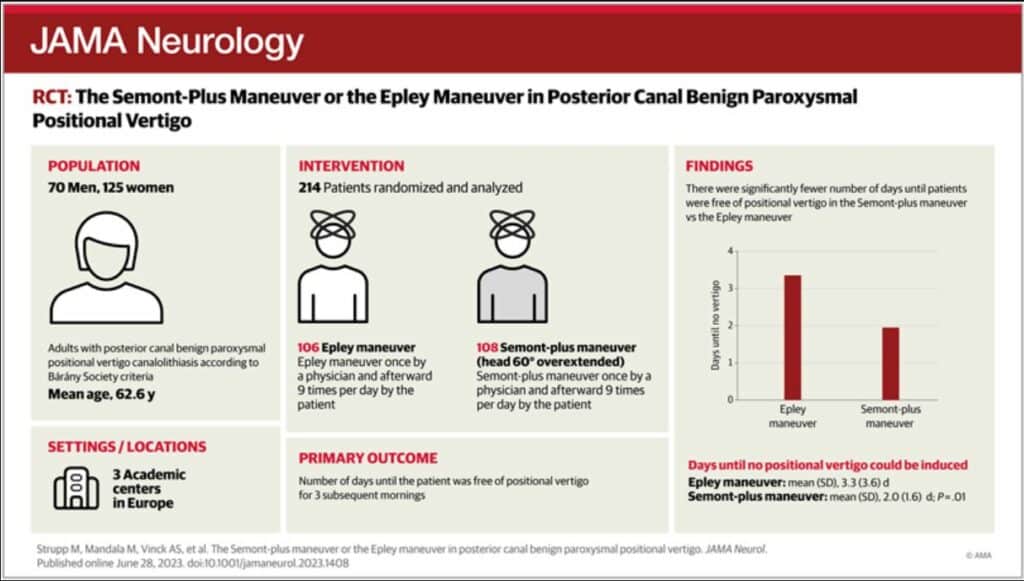A recent clinical trial compared two therapeutic options for treating posterior canal benign paroxysmal positional vertigo (BPPV).
BPPV is a common inner ear disorder that causes brief episodes of intense dizziness or vertigo. It occurs when tiny calcium crystals called otoconia become dislodged and float into the fluid-filled canals of the inner ear, disrupting the normal balance signals and leading to a sensation of spinning or unsteadiness with certain head movements.
Posterior canal benign paroxysmal positional vertigo (pcBPPV) is the most frequently occurring form of BPPV.
Randomized Clinical Trial Comparing Vertigo Treatment
The study, conducted over two years at three referral centers in Europe, aimed to determine which maneuver, the Semont-plus (SM-plus) or Epley maneuver (EM), was more effective in alleviating symptoms.
The trial involved 195 participants who were randomly assigned to either the SM-plus or EM group. After receiving an initial maneuver from a physician, patients performed self-maneuvers at home three times in the morning, three times at noon, and three times in the evening.

Semont-Plus vs. Epley Maneuver for pcBPPV treatment. Image credit: JAMA Neurology
The primary outcome measured the number of days until no positional vertigo could be induced on three consecutive mornings. The results showed that participants in the SM-plus group took an average of 2.0 days to achieve this milestone (range: 1-8 days), while those in the EM group took 3.3 days (range: 1-20 days). This difference indicates that the SM-plus maneuver resulted in a faster recovery time for pcBPPV.
Interestingly, the effect of a single maneuver performed by the physician showed no significant difference between the two groups. However, it’s worth noting that no serious adverse events occurred during the trial, and nausea was reported by a small percentage of participants.
These findings suggest that the SM-plus self-maneuver is a superior treatment option for individuals with pcBPPV, leading to a quicker recovery compared to the EM self-maneuver. This research provides valuable insights into the management of this common dizziness condition, potentially improving patient outcomes and quality of life.
Additional Resources:
- Demonstration of the Semont-Plus Self-maneuver for Right Posterior Canal Canalithiasis Video (0:58)
- Semont-Plus Maneuver for Right Posterior Canal Benign Paroxysmal Positional Vertigo Video (1:19)
- Demonstration of the Epley Self-maneuver for a Right Posterior Canal Canalithiasis Video (1:13)
Citation:
- Strupp MMandala MVinck A, et al. The Semont-Plus Maneuver or the Epley Maneuver in Posterior Canal Benign Paroxysmal Positional Vertigo: A Randomized Clinical Study. JAMA Neurol. Published online June 26, 2023. doi:10.1001/jamaneurol.2023.1408
Source: JAMA Neurology






